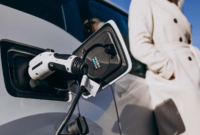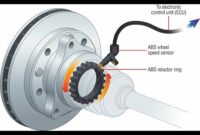
There are some cars that rely on a fuel pressure regulator to provide the necessary fuel pressure to the engine. And of course, like any auto part, the fuel regulator It could eventually fail, and when it does, you’ll likely find one or more symptoms to show it. If you feel that your car may be having problems with this part, then we will present the faults and symptoms most common that can present a faulty fuel regulatorso stay tuned.
Table of Contents
What does a fuel pressure regulator do?
A gas pressure regulator It does what its name says: regulate the pressure of the fuel going to the fuel injectors.
On older vehicles with a continuous fuel system, the regulator is usually a vacuum controlled device installed on the return side of the fuel rail. The regulator directs excess fuel back into the gas tank to maintain fuel pressure. A vacuum line connects the regulator to an engine vacuum source, allowing the regulator to vary fuel pressure according to engine load.

It should be noted that not all vehicles have an external fuel pressure regulator, as most modern vehicles have a returnless fuel system. By contrast, most returnless systems use a control module to manage the speed of the fuel pump, maintaining the desired fuel pressure. There are also some designs that use an in-tank pressure regulator built into the fuel pump.
Most common fuel regulator failures
A gas pressure regulator operated by vacuum can fail for various different reasons, however, we will explain the three most common failures, which are:
1. Excess gasoline in the intake manifold. The regulator starts to leak gasoline and this goes through the vacuum hose. This happens when the internal pressure regulator is damaged and that gasoline ends up in the cylinders. Such a scenario usually results in an engine running quite fuel-efficient (results in rich mixtures).
two. The fuel regulator sticks. That is, it gets stuck and does not release pressureInstead, it blocks the return line and consequently there is high gasoline pressure in the injector rail. This happens mostly at idle or low speed.
3. Regulator not holding pressure or allowing too much pressure to return line. The spring loses force so the governor can’t hold it and it leaks, putting too much gasoline back into the tank, resulting in a lean running engine, that is, too little fuel.
Symptoms of a faulty fuel pressure regulator
Over time, a vacuum-operated pressure regulator can fail, resulting in one or more obvious symptoms. The most common symptoms of a faulty fuel pressure regulator include:
1. Engine performance issues
A faulty fuel pressure regulator can cause a loss of fuel pressure. As a result, the engine would experience performance problems such as hard starting, rough running, stalling, and lack of power. You may have to crank the starter several times to get the engine to start. The engine may skip or have a rough idle. Also, you may lose power when you step on the accelerator pedal.
2. Check Engine Light Illuminated
Your car’s engine computer checks for problems, including engine performance issues caused by a faulty governor, that could lead to increased emissions. Typically, the device will recognize these problems, turn on the check engine light, and store a corresponding Diagnostic Trouble Code (DTC) in its memory.

3. Black smoke from the tailpipe
A faulty fuel pressure regulator can cause the engine to run rich (resulting in rich mixtures). In extreme cases, this condition can cause the vehicle to emit black smoke from the tailpipe.
4. Fuel in regulator vacuum line
When a regulator suffers from a ruptured diaphragm, you’ll likely find fuel in the line that connects the device to engine vacuum.
5. Discolored spark plugs
Vehicle spark plugs may be soot colored. Remove a spark plug and look at the tip. If it has darkened, the fuel pressure regulator could be faulty.
6. Loss of fuel
You may notice fuel dripping from the car’s exhaust duct. A malfunctioning pressure regulator can cause such a leak if it lets too much fuel into the cylinders.
Where is the fuel pressure regulator located?
On older cars with multi-port fuel injection and a continuous fuel system, the regulator is usually mounted on the fuel rail.
There are also older applications that feature Throttle Body Injection (TBI) or Center Port Injection (CPI). With TBI, the governor is integrated into the fuel metering assembly inside the throttle body. Vehicles with CPI have the regulator located on the injector assembly.

Instead, and as we mentioned earlier, most newer cars have a returnless fuel system and therefore do not have an external pressure regulator. As a result, most returnless systems employ a control module to manage the speed of the fuel pump, maintaining the desired fuel pressure. There is also the case of some designs that use an in-tank pressure regulator that is integrated into the fuel pump.
IT MAY INTEREST YOU:
- cheapest gas near me
- My car smells of gasoline and shakes
Font: car parts, electrictrophe




